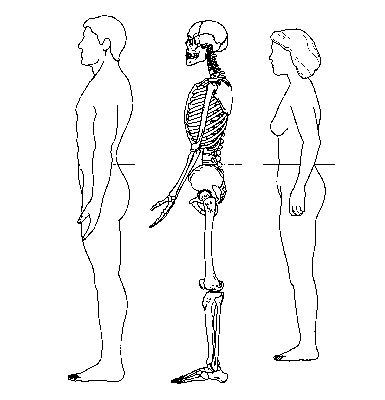Waist Circumference: An Easy Measurement Provides Great Information
Nov 27, 2012, 01:00 AM
 I just saw a title that sparked my interest. Stone Heath Newsletters reported “Waist circumference (WC) trumps body mass index (BMI) for mortality risk prediction.” I love that a simple measurement provides great information. The abstract from “Body mass index versus waist circumference as predictors of mortality in Canadian adults,” just published in the International Journal of Obesity, reports that increased death risk from all causes, cancer, and cardiovascular disease (CVD) are associated with elevated BMI, WC and waist to hip ratio (WHR). However, WC actually did better than the other two measures. In addition, it is easy, quick and inexpensive.
I just saw a title that sparked my interest. Stone Heath Newsletters reported “Waist circumference (WC) trumps body mass index (BMI) for mortality risk prediction.” I love that a simple measurement provides great information. The abstract from “Body mass index versus waist circumference as predictors of mortality in Canadian adults,” just published in the International Journal of Obesity, reports that increased death risk from all causes, cancer, and cardiovascular disease (CVD) are associated with elevated BMI, WC and waist to hip ratio (WHR). However, WC actually did better than the other two measures. In addition, it is easy, quick and inexpensive.
Is there a negative to doing a waist circumference? Yes. I have found that patients dread the tape measure, possibly even more than the scale. I am part of a team teaching a 12-week weight management class, specifically for people with diabetes. As part of the assessment, I perform WC at the start, halfway point, and completion of the program. It amazes me, and the participants, to see how much WC can change with weight loss. It is common to see a two to four inch loss in the 12 weeks. To no surprise, this loss is often accompanied by decreased need for diabetes, HTN, and cholesterol medications!
Measuring a WC is easy. I have some hints. It is to be done where the waist is narrowest. When someone is overweight, especially with an apple rather than pear shaped body, this is often the area that the waist measurement is greatest. For an accurate measurement, find the arch of the back and slide your hand to the furthest inward spot. This is the height for the measurement. Then, stand to the side of the person and run the tape measure around on the horizontal. Being in the front or back of the person can put your face in private areas so stand to the side. This also allows you to see the tape on the horizon. If the person is quite large, ask them to hold the end as you walk the tape around. Have the person relax their arms at their sides (lifting decreases the circumference) and breathe normally, then read the measurement. It is important to have a tape measure that is large enough. There are some made specifically for WC.
 What do the results mean? A man’s waist greater than 40 inches (102 cm) or a woman’s greater than 35 inches (88 cm), is related to increased risk for type 2 diabetes, hypertension, dyslipidemia, and cardiovascular disease. Educating the patient about the benefits of a smaller WC may help to encourage weight loss and decrease the risk of diseases and mortality.
What do the results mean? A man’s waist greater than 40 inches (102 cm) or a woman’s greater than 35 inches (88 cm), is related to increased risk for type 2 diabetes, hypertension, dyslipidemia, and cardiovascular disease. Educating the patient about the benefits of a smaller WC may help to encourage weight loss and decrease the risk of diseases and mortality.
Do you do WC measurements with patients? Do you have hints? Do you think it is provides good information?
(Image courtesy of: http://www.nhlbi.nih.gov/guidelines/obesity/e_txtbk/txgd/4142.htm)